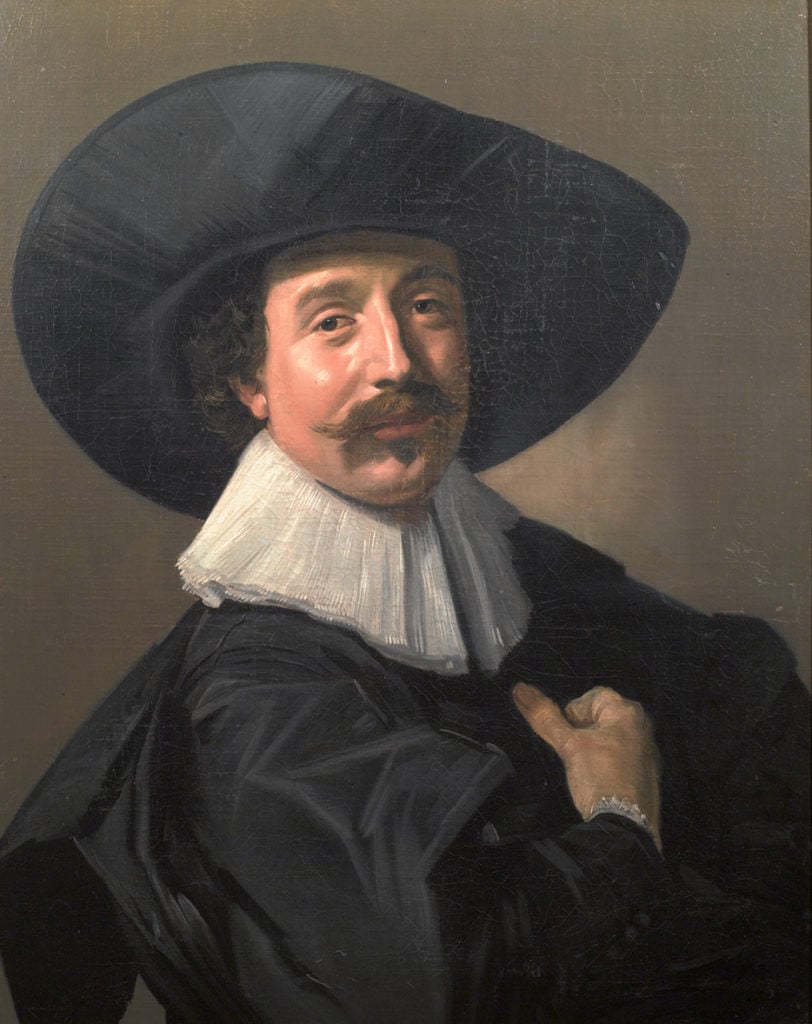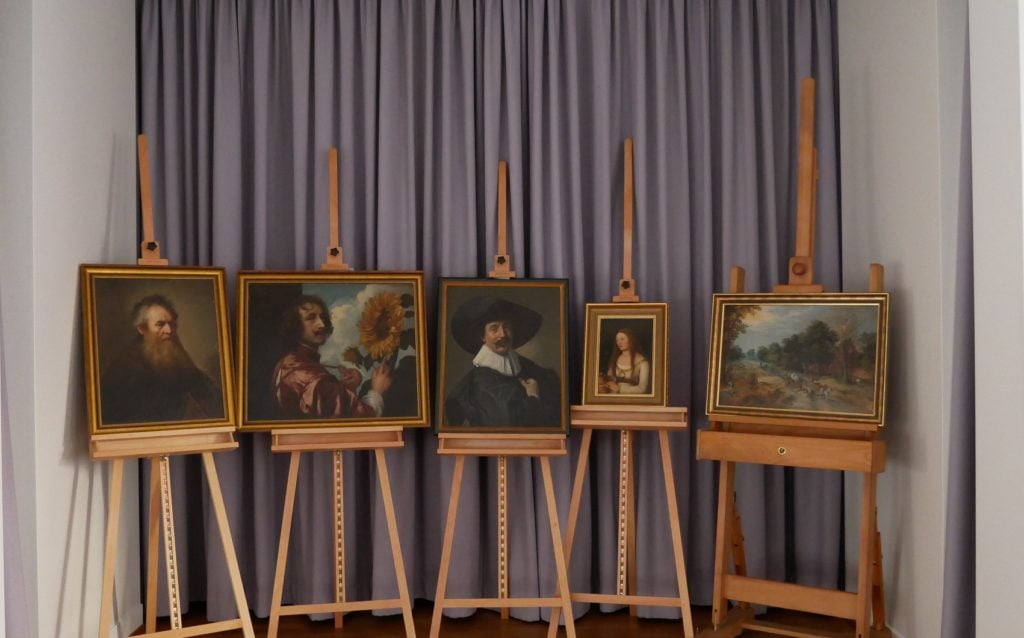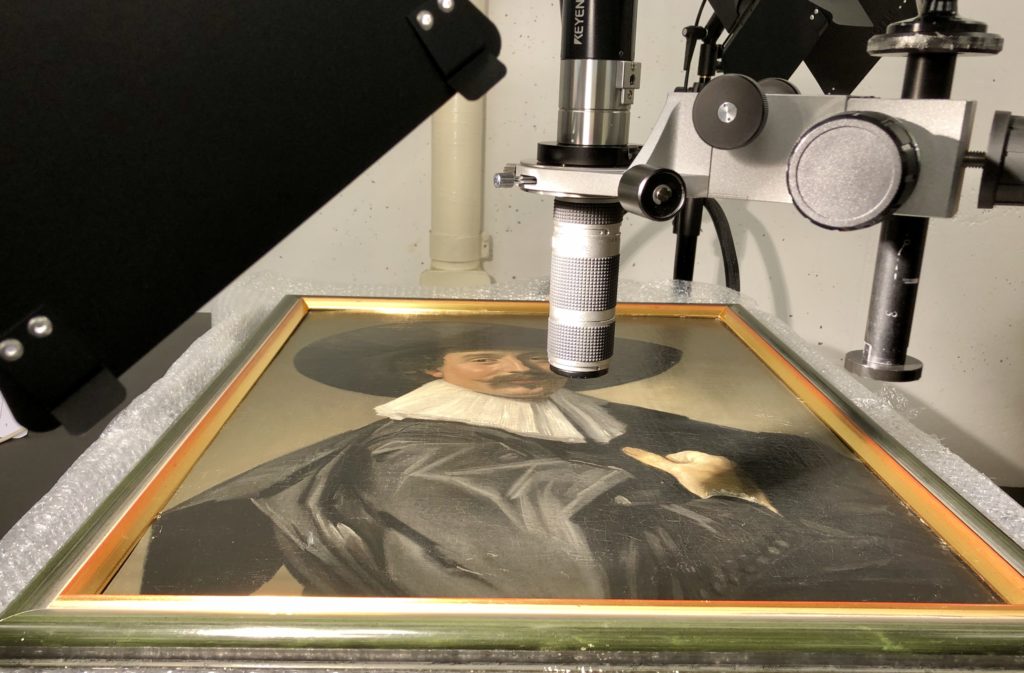Art World
Five Old Master Paintings Stolen 40 Years Ago in a Notorious Art Heist Have Been Recovered Thanks to a German Mayor’s Ingenious Plan
The paintings are returning to a Baroque palace having been smuggled into West Germany in the 1980s.

The paintings are returning to a Baroque palace having been smuggled into West Germany in the 1980s.

Kate Brown

When the mayor of a small German city was shown a photograph last year of a painting hanging on a living room wall, he recognized the work immediately. It was one of five Old Master paintings stolen from the Friedenstein Palace in Gotha nearly 40 years ago in an audacious theft that East Germany’s feared police failed to solve.
Now, the treasures stolen in what some consider to be Germany’s equivalent of the Isabella Stewart Gardner theft have been returned safe and sound.
Mayor Knut Kreuch negotiated through intermediaries acting on behalf of anonymous sellers who were initially demanding millions of euros for the works. In what has been described as a “masterstroke,” the objects were quietly returned last September, arriving in Berlin by van, and no ransom was paid. (Further specifics of the recovery have yet to be divulged publicly.)
Last week, the five paintings were unveiled and the operation to recover them, revealed. This week, they go on view at the Friedenstein Palace from which they were stolen in 1979.
The long-lost paintings include a portrait by Frans Hals, a painting by Hans Holbein the Elder, a work once thought to be by Jan Lievens, and a landscape from the workshop of Jan Brueghel the Elder. The fifth painting is a copy by an unknown artist of a Van Dyck self-portrait. All the paintings date from the mid-16th century to the 17th century. The Art Newspaper reports their value to be around €4 million ($4.4 million).

The recovered paintings on show in Berlin.
It is unclear if the authorities are unwilling or rather unable to say who they suspect stole the paintings, beyond the fact that they are German residents. It is believed the works were smuggled into West Germany in the 1980s, and so passed through the Iron Curtain.
The so-called Gotha robbery was the largest single art heist ever to take place in the former German Democratic Republic. The country was left stunned when the works disappeared early in the morning of December 14, 1979. Police were unable to recover the paintings despite interrogating more than 1,000 people, including the palace’s employees, and their families.
Since their return in September, the paintings have been authenticated by experts at Berlin State Museums’ Rathgen Research Laboratory as the ones stolen from the castle.

Digital microscopic examination of the painting surface of the Frans Hals painting. Photo: Rathgen Research Laboratory, Berlin State Museums, Prussian Cultural Heritage Foundation.
Bodo Ramelow, the minister president of the Free State of Thuringia, said the paintings’ return filled “a painful gap in the historic building,” referring to the early Baroque palace, which dates to the 17th century.
The Ernst von Siemens Art Foundation provided around €50,000 ($55,000) toward the costs of lawyers and logistics. Its general secretary, Martin Hoernes, stressed: “No money goes to thieves. You don’t do that,” the Sueddeutsches Zeitung reports. The lawyer’s clients initially demanded €5.25 million ($5.8 million), according to the newspaper Der Spiegel.
The works will be on view at the Schloss Friedenstein in Gotha over the next six days before undergoing restoration. An exhibition telling the story of the theft, and the paintings’ unlikely recovery, is being planned for 2021.